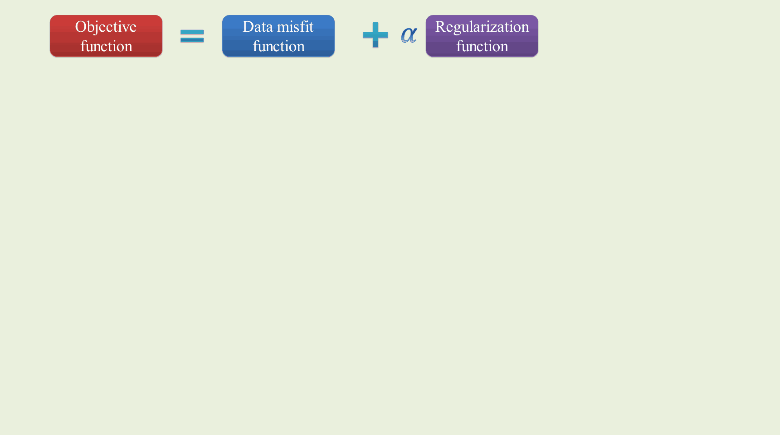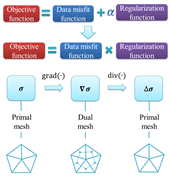
It is known that the image reconstruction problem of electrical impedance tomography (EIT) is ill-posed. As a result, a regularization scheme is usually applied to alleviate the ill-posedness. In the commonly used Tikhonov regularization scheme, a regularization function is added to the data misfit function and a regularization parameter is set to adjust the relative weight between the two terms. The choice of a proper regularization parameter usually requires expertise and considerable numerical experiments. In this paper, we applied the multiplicative regularization scheme to EIT image reconstruction. In this scheme, an objective function is constructed in which the data misfit function is multiplied by a regularization function, and no regularization parameter is needed. Gauss—Newton method is used to minimize the objective function iteratively.
We used a weighted-norm-based regularization function which has the edge-preserving characteristic and is differentiable. The gradient of the regularization function is related to the discrete gradient and divergence operators on tetrahedral meshes, which are common in EIT image reconstruction. To formulate these operators, we used the discrete exterior calculus (DEC) theory. This theory studies the discrete differential forms, the discrete vector fields, and the operations on them. It provides a rigorous and systematic way for formulating discrete differential operators in any dimensions. The resulting discrete gradient and divergence operators can be expressed as sparse-matrix notations.
Based on the multiplicative scheme, we formulated both the absolute and difference image reconstruction problems. The algorithms were tested using synthetic data from a numerical phantom and experimental data from a tank phantom and a human subject. The results demonstrate the robustness of the algorithm against noise and show its potential application for thoracic imaging.

